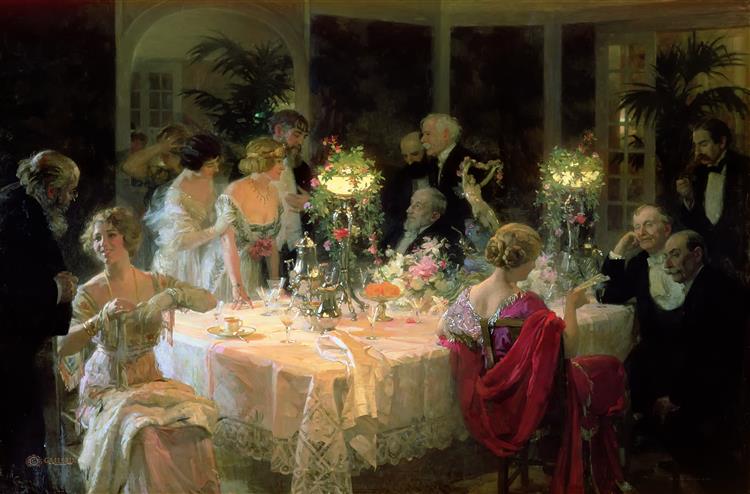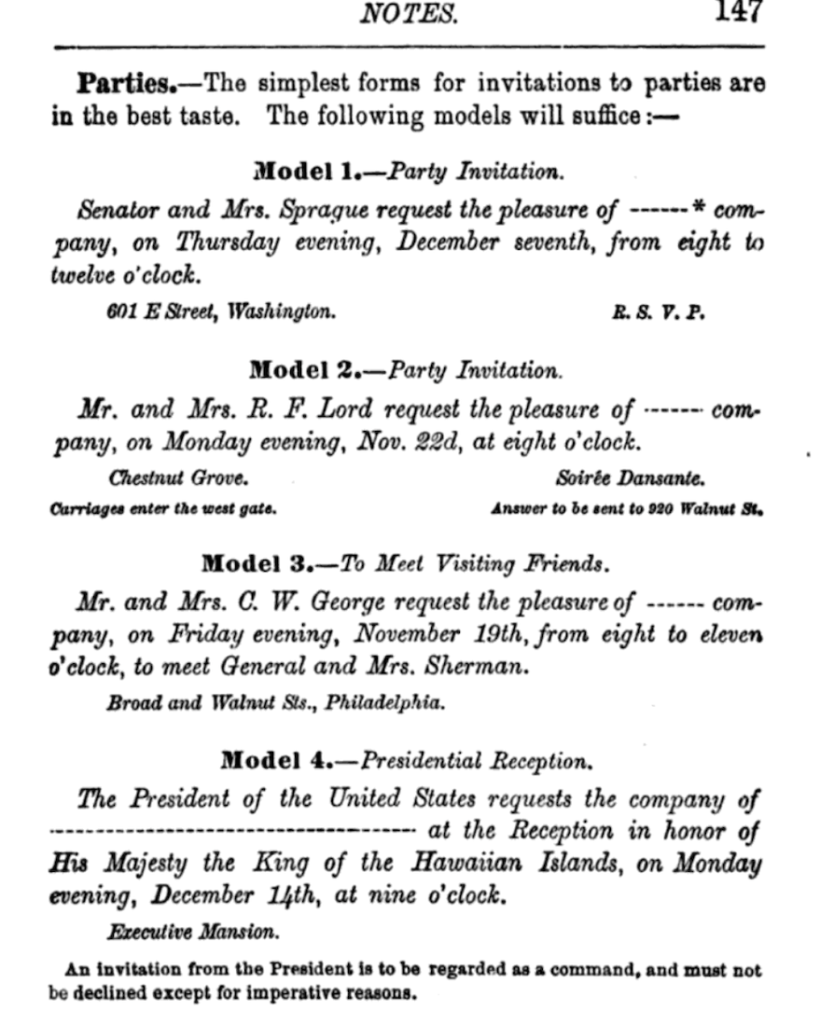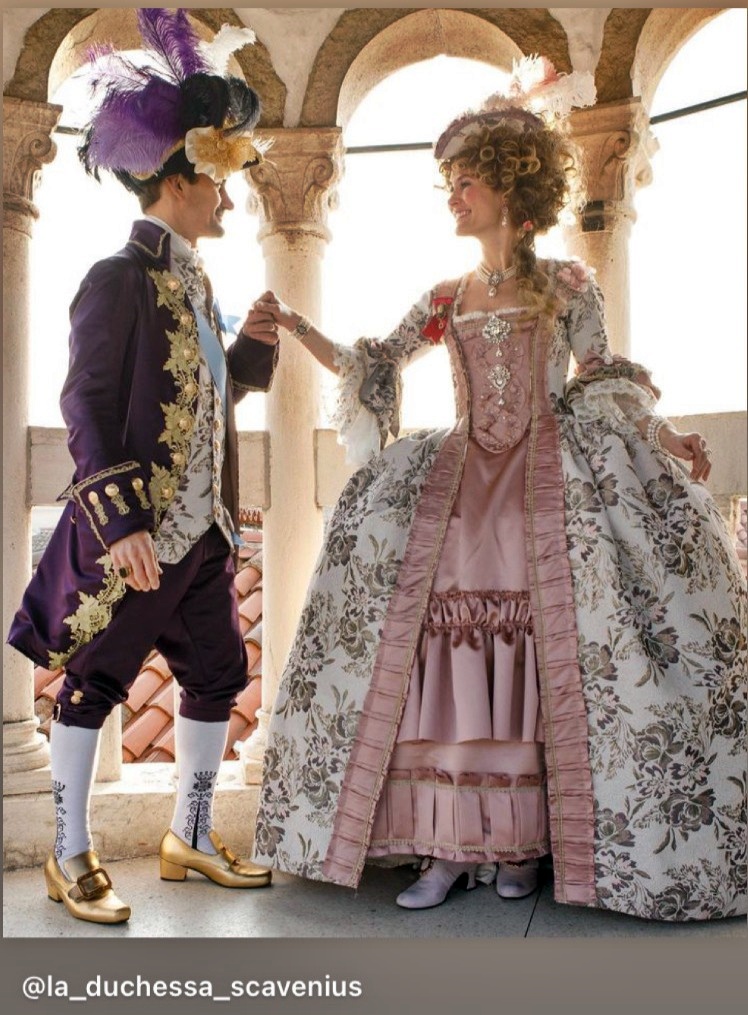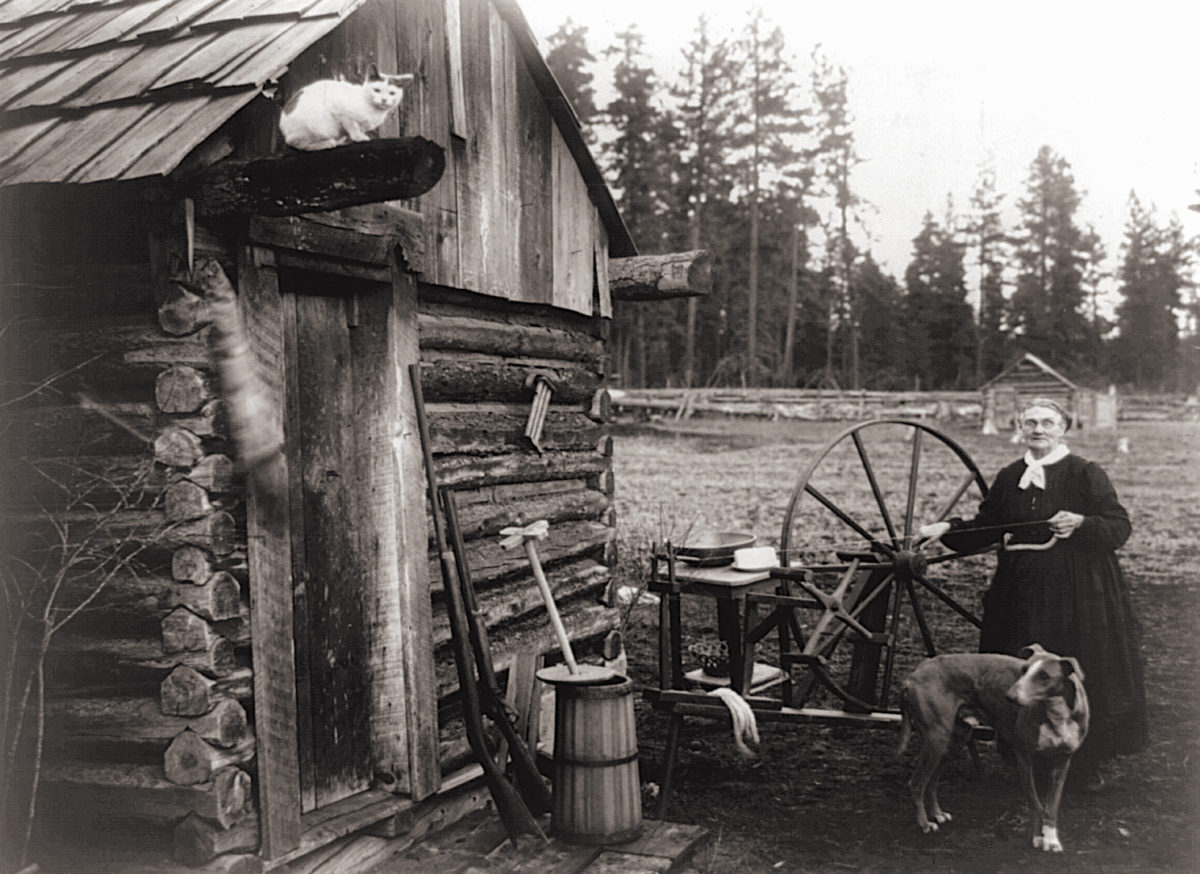Did you enjoy your holiday season? If so, how are you adjusting to being back into the swing of things? It has been a bit challenging for me as I would much rather be continuing to have fun hangouts with friends. There must be something in the air, as the invites have continued coming in.
For me, I believe that attending and organizing a special event is about the entire cycle of it: the invites, the setting you prepare, the theme, the comfort of the guests, and even the after-event thank yous and connection. Perhaps it is my interest in Victorian culture that causes me to be naturally driven in that way. Or perhaps I was a Victorian lady in a previous life.
When it comes to Victorian party etiquette, there is a lot to know and learn, so much so that I almost feel I had bit off more than I could chew with this post. Let’s take a brief look at some of the main points that stood out to me.
What would you like to learn more about when it comes to Victorian etiquette or culture? Let us know in the comments.
Save the date
The success of a Victorian party started with the invitations. Improper correspondence could make or break an occasion or even a person’s reputation.
Invitations to parties were written according to the recipient, the type of gathering, and the size of the gathering. In regards to the size of the party 1860’s The ladies’ book of etiquette, and manual of politeness; a complete hand book for the use of the lady in polite society advised:
“In writing an invitation for a small party, it is kind, as well as polite, to specify the number of guests invited, that your friends may dress to suit the occasion. To be either too much, or too little dressed at such times is embarrassing.”

One of my favorite sources for exploring Victorian culture, Beeton’s housewife’s treasury of domestic information advised the following for party hosts in regard to the size of the guest list:
“To begin with the first part of every entertainment — the invitations. If the dinner is to be a small one, notes are most usual, and the ordinary form is, “Dear Mrs. A., — Will you and Mr. A. and your daughter give us the pleasure of your company at dinner on Tuesday, the 9th inst., at a quarter before eight?”
“If the party be a large one, and formal invitations are preferred, the note may run: “Mr. and Mrs. B. request the pleasure” — if preferred, “honour” may be substituted — “ of Mr. and Mrs. A. and Miss A.’s company at dinner on Tuesday, the 9th inst., at a quarter to eight.”
Another great source for a look into Victorian culture is How to Write Letters. It provides templates for written correspondence of all types. Below is a page from the chapter on invites to social gatherings.

It has stood out to me before that the book mentions a “Presidential Reception.” I think we will need to explore that type of party more at some point.
Responding to an invitation
“In replying to these invitations adopt the same form as the invitation; that is to say, a friendly note in reply to one of the same description, and a formal one in answer to a card or formal note.
One mistake in answering invitations may be noted. People are very apt to write, “ Mr. and Mrs. A. will have the pleasure of accepting.” The answer should run: “Mr. and Mrs. A. have much pleasure in,” or, “have the honour of accepting Mr. and Mrs. B’s kind invitation for ; ” or, if preferred: “ Mr. and Mrs. A. will have the pleasure ” — or “ honour of dining with Mr. and Mrs. B. on Tuesday, the 9th inst.”
-Beeton’s
(I hope that is clearer to you than it was to me the first time I read it!)
Dressing for a Victorian party
“When dressing for a party, while you show that you honor the occasion by a tasteful dress, avoid glaring colors, or any conspicuous ornament or style of costume.”
-The ladies’ book of etiquette

Corresponding about a party was strictly regulated, but what one wore to the event itself would leave a mark one way or another. And one was well-served to be up-to-date with the rules.
The ladies’ book of etiquette, advised the following for summer parties:
“For small social companies, a dark silk in winter, and a pretty lawn, barege, or white muslin in summer are the most appropriate. A light head-dress of ribbon or velvet, or a plain cap, are the most suitable with this dress. For a larger party, low-necked, short-sleeved silk, light colored, or any of the thin goods made expressly for evening wear, with kid gloves, either of a color to match the dress or of white ; black lace mittens are admissable, and flowers in the hair.
A ball dress should be made of either very dressy silk, or light, thin material made over silk. It should be trimmed with lace, flowers, or ribbon.” [sic]
And as for cooler weather:
“Make it a fixed rule to have the head, feet, and chest well protected when going to a party, even at the risk of a crushed flower or a stray curl. Many a fair head has been laid in a coffin, a victim to consumption, from rashly venturing out of a heated hall room, flushed and excited, with only a light protection against the night air. The excitement of the occasion may prevent immediate discomfort in such cases, but it adds to the subsequent danger.”

The etiquette for hosts and hostesses was extensive and a topic I will explore in a future post. For now, it is notable to learn that what the hostess wore was as dictated by how many guests she was expecting as were her invitations:
“Evening dress – Must be governed by the number of guests you may expect to meet, and the character of the entertainment to which you are invited. For small social companies, a dark silk in winter, and a pretty lawn, barege, or white muslin in summer, are the most appropriate. A light head-dress of ribbon or velvet, or a plain cap, are the most suitable with this dress. For a larger party, low-necked, short-sleeved silk, light colored, or any of the thin goods made expressly for evening wear, with kid gloves, either of a color to match the dress or of white ; black lace mittens are admissable, and flowers in the hair [sic].”
Conversation

Today most parties revolve around small talk and frankly, hoping for the best. This wasn’t the case for Victorian parties. It is a wonder such occasions took place at all because they sure do sound tedious. But then again, the individuals were unaware of how we do things in the 21st century. Ladies book makes the importance of being mindful of verbal conduct very clear:
“The art of conversation consists in the exercise of two fine qualities. You must originate, and you must sympathize ; you must possess at the same time the habit of communicating and of listening attentively. The union is rare but irresistible. None but an excessively ill-bred person will allow her attention to wander from the person with Whom she is conversing; and especially she will never, while seeming to be entirely attentive to her companion, answer a remark or question made to another person, in another group. Unless the conversation be general among a party of friends, confine your remarks and attention entirely to the person with whom you are conversing. Steele says, “I would establish but one great general rule in conversation, which is this — that people should not talk to please themselves, but those who hear them.”
I am not entirely sure who “Steele” is, but I do like the advice.

And as far as the bores in the room go The ladies’ book of etiquette’s author, Florence Hartley, seems to think that hostesses had nothing short of magic powers:
“You must be everywhere at the same moment. Not a guest must pass unwelcomed. You must introduce partners to all the wallflowers. You must see that every set is made up before the music commences. Each guest must be introduced to a proper partner for every dance, one sigh of utter weariness must disturb your smiling serenity. You must be ready to chat cheerfully with every bore who detains you, when crossing the room, to make up a set of quadrilles in a minute’s time, or listen patiently to the sighing lover, whose fair one is engaged fifty times during twenty dances; secure a good dancer for each longing belle; do the same for the beaux; yet you must never be hurried, worried, or fatigued.”
Is there a Mr. with you?
Another topic of interest of mine is the different ways unmarried and married women were treated during the Victorian era. One might start with these guidelines from Ladies’ book:
“Never, in speaking to a married lady, enquire for her husband, or, if a gentleman, ask for his wife. The elegant way is to call the absent party by their name; ask Mr. Smith how Mrs. Smith is, or enquire of Mrs. Jones for Mr. Jones, but never for “your husband” or “your wife.”
And as for referring to your own husband:
“On the other hand, if you are married, never speak of your husband as your “lord,” “husband,” or “good man,” avoid, also, unless amongst relatives, calling him by his Christian name. If you wish others to respect him, show by speaking of him in respectful terms that you do so yourself.”

After the party
“One rule must always be borne in mind, that under no circumstances whatsoever can visiting cards be sent by post.”
-Beeton’s
Communication between those in one’s social circle was often a continual loop in the 19th century. The day following a party, for instance, would find the lady of the house sending a letter to the hosts. Beeton’s advises:
“Cards must always be left after a party has taken place at a house when the lady has been invited. If the entertainment has been a dinner, and she is not very intimate with the hostess, cards should be left the next day — merely left, without inquiring if the lady is at home; if she is intimate, a call within ten days will suffice.
After a ball, concert, reception, or afternoon reception, cards should be left, either the ensuing day, or certainly within the week; and this applies whether the invitation has been accepted or not.
Of course in country neighbourhoods such regularity of etiquette is impossible and is not expected, but a visit should be paid within a reasonable time after any entertainment.”
More Victorian fun:
The social season: 19th Century’s time to party
Have fun, but not too much fun: Victorian ball etiquette














Thanks!
good job who made this
Hey Jane. I just love your articles and this one is probably one of my favorites. I adore anything Victorian so learning about how they entertained their guest for parties and such was a great read. I can’t wait to read the next article you write.